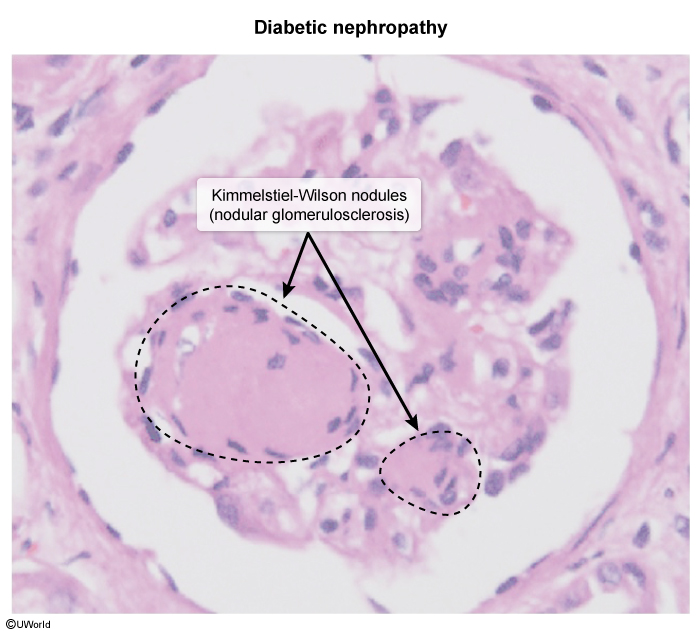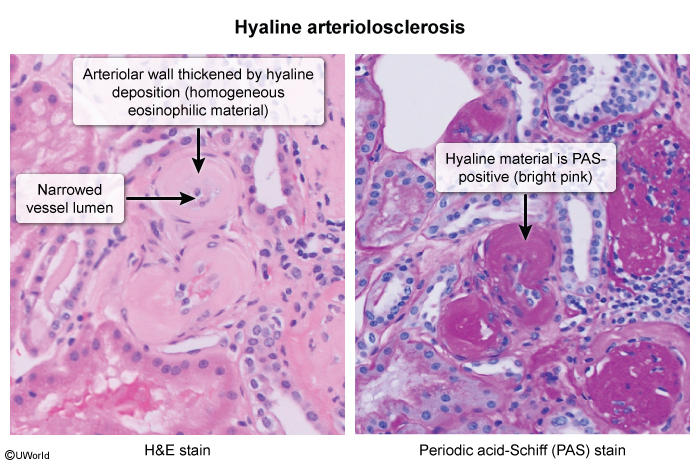Diabetic Kidney Disease
Article Sections
Introduction
The major complications associated with diabetes mellitus (DM) include the following:
Macrovascular complicationsThese affect larger blood vessels and include:
- coronary artery disease
- cerebrovascular disease
- peripheral artery disease.
These complications are driven by accelerated atherosclerosis, plaque formation, and vascular occlusion, as well as effects of comorbid risk factors (eg, hypertension, dyslipidemia, obesity).
Microvascular complicationsThese involve damage to small blood vessels (ie, microangiopathic damage) and include:
- diabetic eye retinopathy
- diabetic nephropathy
- diabetic neuropathy.
These complications are driven by chronic hyperglycemia-induced endothelial dysfunction.
This article focuses on diabetic kidney disease (DKD). DKD is characterized by irreversible injury to the glomerular basement membrane and surrounding structures, leading to increased intraglomerular pressure, proteinuria, and overt kidney failure.
Pathophysiology of diabetes complications
In general, diabetic complications are a result of chronic hyperglycemia (and, in the case of type 2 DM [T2DM], insulin resistance) driving chronic metabolic inflammation, which is further compounded by other independent risk factors commonly found in patients with DM (eg, hypertension, hyperlipidemia, obesity). This hyperglycemia-induced metabolic inflammation manifests with the following pathophysiologic effects:
Continue Learning with UWorld
Get the full Diabetic Kidney Disease article plus rich visuals, real-world cases, and in-depth insights from medical experts, all available through the UWorld Medical Library.
Figures
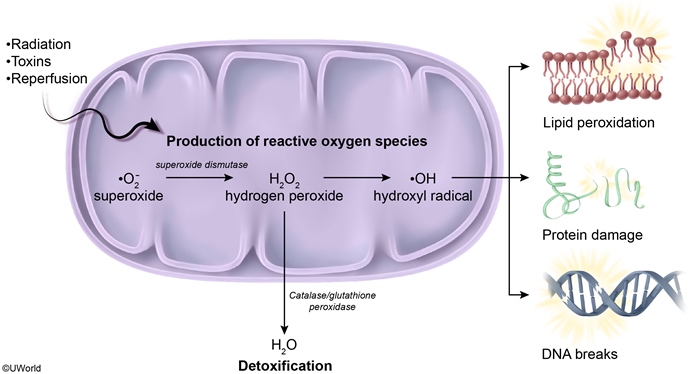
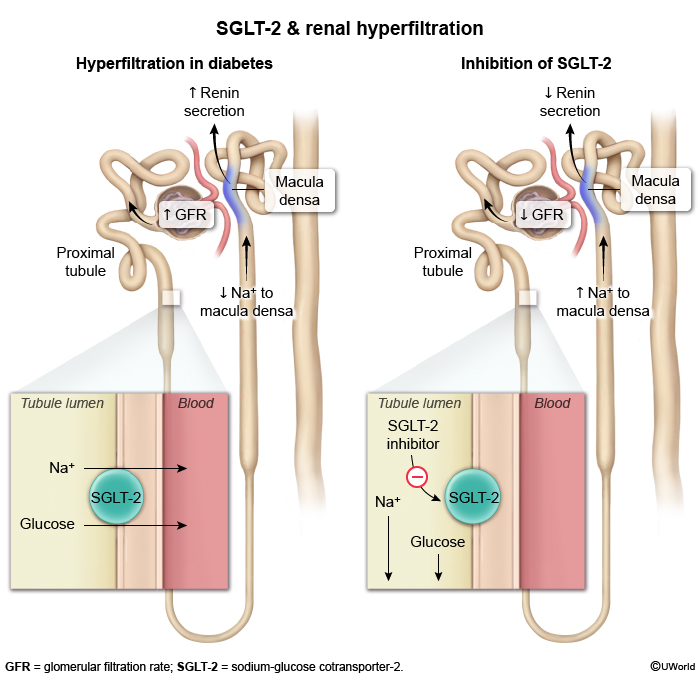
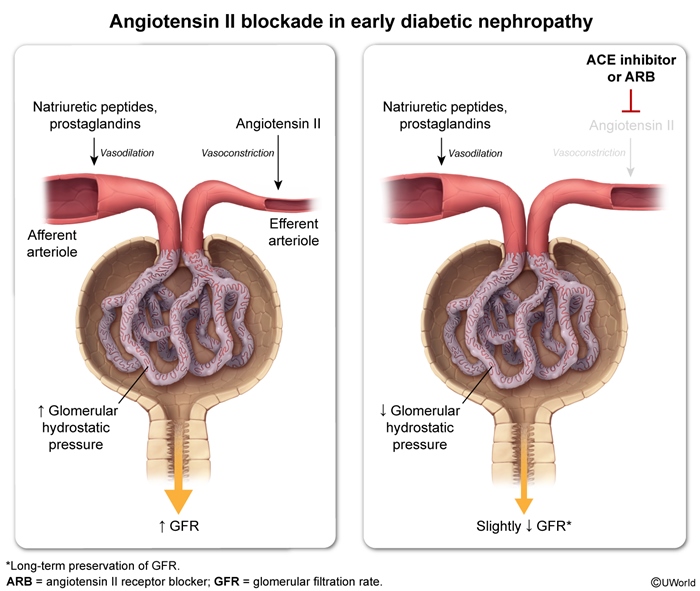
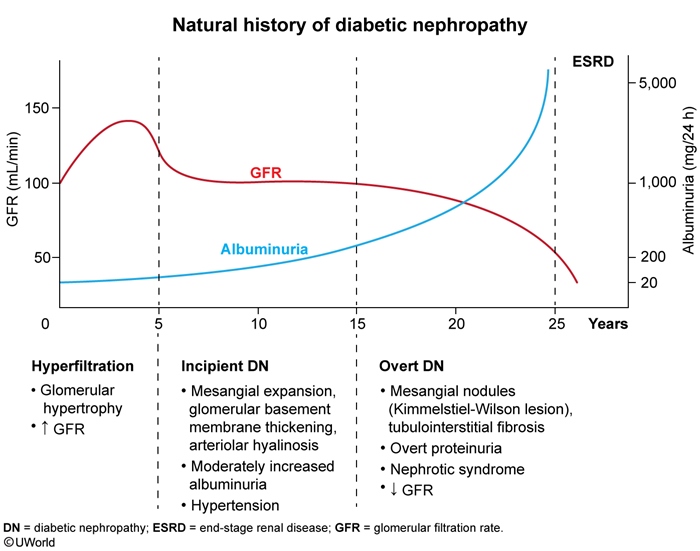
Images
